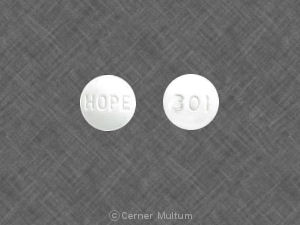Scopolamine Dosage
Medically reviewed by Drugs.com. Last updated on Aug 27, 2025.
Applies to the following strengths: 1.5 mg; 1 mg/72 hr; 1 mg/mL; 0.4 mg/mL; 0.4 mg
Usual Adult Dose for:
Additional dosage information:
Usual Adult Dose for Nausea/Vomiting
Post-operative nausea and vomiting (PONV): Apply 1 patch to the hairless area behind the ear the evening before scheduled surgery
Comment: The patch should be kept in place for 24 hours following surgery.
Use: Prevention of PONV (in surgeries other than cesarean sections) associated with recovery from anesthesia and/or opiate anesthesia and surgery
Usual Adult Dose for Nausea/Vomiting - Postoperative
Post-operative nausea and vomiting (PONV): Apply 1 patch to the hairless area behind the ear the evening before scheduled surgery
Comment: The patch should be kept in place for 24 hours following surgery.
Use: Prevention of PONV (in surgeries other than cesarean sections) associated with recovery from anesthesia and/or opiate anesthesia and surgery
Usual Adult Dose for Motion Sickness
Apply 1 patch to the hairless area behind the ear at least 4 hours before antiemetic effect is needed
Comment: Patches may be replaced every 3 days as needed.
Use: Prevention of nausea and vomiting associated with motion sickness
Renal Dose Adjustments
Frequent monitoring recommended.
Liver Dose Adjustments
Frequent monitoring recommended.
Precautions
CONTRAINDICATIONS:
- Hypersensitivity to the active component, other belladonna alkaloids, or to any of the ingredients
- Patients with angle closure glaucoma
Safety and efficacy have not been established in pediatric patients.
Consult WARNINGS section for additional precautions.
Dialysis
Data not available
Other Comments
Administration advice:
- IV: Inject slowly and with caution.
- Oral tablets: Tablets may be chewed, sucked, or swallowed.
- Transdermal: Patients should be strongly advised to wash their hands thoroughly with soap and water immediately after handling patches. After completing treatment, patches should be folded and discarded (with the sticky sides facing inwards), and patients should wash the application site after patch removal.
Storage requirements:
- Tablets: Protect from light.
Reconstitution/preparation techniques:
- Injection: Dilute with dextrose or 0.9% sodium chloride for injections
- IV: Dilute with sterile water for injection
IV compatibility:
- Compatible: Dextrose, sodium chloride
General:
- Parenteral: This drug should not be given via IM injection in patients on anticoagulants, as IM hematoma may occur; IV routes may be used instead.
- Transdermal: Limited contact of the patch with water (e.g. bathing or swimming) should not affect the system, but it should be kept as dry as possible.
Patient advice:
- Inform patients that this drug may cause blurred vision, confusion, dizziness, drowsiness, and/or visual disturbances, and they should avoid driving or operating machinery if these side effects occur.
- Advise patients to remove scopolamine patches immediately and contact a physician if they experience symptoms of acute angle closure glaucoma (pain and reddening of the eyes accompanied by dilated pupils).
- Instruct patients to remove the patch if they develop any difficulties in urinating.
- Patients should not consume alcohol while using this drug.
- If the patch accidentally becomes detached, it should be replaced by a fresh system.
More about scopolamine
- Check interactions
- Compare alternatives
- Pricing & coupons
- Reviews (211)
- Latest FDA alerts (1)
- Side effects
- During pregnancy
- Drug class: anticholinergic antiemetics
- Breastfeeding
- En español
Patient resources
Other brands
Professional resources
Other brands
Related treatment guides
See also:
Further information
Always consult your healthcare provider to ensure the information displayed on this page applies to your personal circumstances.


